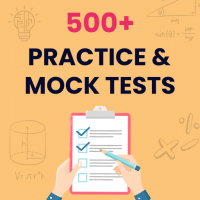CAT Exam > CAT Questions > Which of the following might just hinder cre...
Start Learning for Free
Which of the following might just hinder creativity within an organization?
- a)According recognition for good effort and performance
- b)Encouraging experimentation among employees
- c)Restricting on-the-job interaction in order to encourage individual excellence
- d)Tolerating failures
Correct answer is option 'C'. Can you explain this answer?
Most Upvoted Answer
Which of the following might just hinder creativity within an organiz...
Restricting on-the-job interaction in order to encourage individual excellence
The correct answer is option C, which states that restricting on-the-job interaction can hinder creativity within an organization. This is because creativity often thrives in an environment where there is open collaboration, exchange of ideas, and sharing of knowledge among employees. By restricting on-the-job interaction, an organization is limiting the opportunities for employees to engage with one another, share ideas, and collectively brainstorm innovative solutions.
Restricting on-the-job interaction can hinder creativity for several reasons:
1. Limited access to diverse perspectives: When employees are not encouraged to interact and collaborate with each other, they miss out on the opportunity to benefit from diverse perspectives. Different individuals bring unique insights, experiences, and expertise to the table, which can spark new ideas and innovative solutions. By restricting interaction, the organization is limiting the potential for cross-pollination of ideas and stifling creativity.
2. Lack of feedback and validation: Interaction among employees provides a platform for feedback and validation of ideas. When employees have the opportunity to discuss their ideas with others, they can receive valuable feedback, suggestions, and alternative viewpoints. This feedback can help refine and improve their ideas, leading to more creative outcomes. By restricting interaction, the organization is depriving employees of this valuable feedback loop, which can inhibit creativity.
3. Missed opportunities for collaboration: Collaboration is often a catalyst for creativity. When employees collaborate and work together on projects, they can leverage each other's strengths, build upon each other's ideas, and generate innovative solutions. By restricting interaction, the organization is limiting the potential for collaboration and hindering the generation of creative ideas.
4. Reduced motivation and engagement: Interaction among employees fosters a sense of connection, belonging, and engagement. It creates a positive work environment where employees feel supported, valued, and motivated. By restricting interaction, the organization may create a sense of isolation and disengagement among employees, which can negatively impact their motivation and ultimately hinder their creativity.
In conclusion, restricting on-the-job interaction within an organization can hinder creativity by limiting access to diverse perspectives, feedback, collaboration opportunities, and reducing employee motivation and engagement. It is important for organizations to create an environment that encourages open interaction and collaboration among employees to foster creativity and innovation.
The correct answer is option C, which states that restricting on-the-job interaction can hinder creativity within an organization. This is because creativity often thrives in an environment where there is open collaboration, exchange of ideas, and sharing of knowledge among employees. By restricting on-the-job interaction, an organization is limiting the opportunities for employees to engage with one another, share ideas, and collectively brainstorm innovative solutions.
Restricting on-the-job interaction can hinder creativity for several reasons:
1. Limited access to diverse perspectives: When employees are not encouraged to interact and collaborate with each other, they miss out on the opportunity to benefit from diverse perspectives. Different individuals bring unique insights, experiences, and expertise to the table, which can spark new ideas and innovative solutions. By restricting interaction, the organization is limiting the potential for cross-pollination of ideas and stifling creativity.
2. Lack of feedback and validation: Interaction among employees provides a platform for feedback and validation of ideas. When employees have the opportunity to discuss their ideas with others, they can receive valuable feedback, suggestions, and alternative viewpoints. This feedback can help refine and improve their ideas, leading to more creative outcomes. By restricting interaction, the organization is depriving employees of this valuable feedback loop, which can inhibit creativity.
3. Missed opportunities for collaboration: Collaboration is often a catalyst for creativity. When employees collaborate and work together on projects, they can leverage each other's strengths, build upon each other's ideas, and generate innovative solutions. By restricting interaction, the organization is limiting the potential for collaboration and hindering the generation of creative ideas.
4. Reduced motivation and engagement: Interaction among employees fosters a sense of connection, belonging, and engagement. It creates a positive work environment where employees feel supported, valued, and motivated. By restricting interaction, the organization may create a sense of isolation and disengagement among employees, which can negatively impact their motivation and ultimately hinder their creativity.
In conclusion, restricting on-the-job interaction within an organization can hinder creativity by limiting access to diverse perspectives, feedback, collaboration opportunities, and reducing employee motivation and engagement. It is important for organizations to create an environment that encourages open interaction and collaboration among employees to foster creativity and innovation.
Free Test
FREE
| Start Free Test |
Community Answer
Which of the following might just hinder creativity within an organiz...
Creativity needs acceptance of successes and failures alike, through recognition of experimentation. It encourages free intermingling. Restrictions on interaction will retard, rather than promote, excellence.

|
Explore Courses for CAT exam
|

|
Question Description
Which of the following might just hinder creativity within an organization?a)According recognition for good effort and performanceb)Encouraging experimentation among employeesc)Restricting on-the-job interaction in order to encourage individual excellenced)Tolerating failuresCorrect answer is option 'C'. Can you explain this answer? for CAT 2025 is part of CAT preparation. The Question and answers have been prepared according to the CAT exam syllabus. Information about Which of the following might just hinder creativity within an organization?a)According recognition for good effort and performanceb)Encouraging experimentation among employeesc)Restricting on-the-job interaction in order to encourage individual excellenced)Tolerating failuresCorrect answer is option 'C'. Can you explain this answer? covers all topics & solutions for CAT 2025 Exam. Find important definitions, questions, meanings, examples, exercises and tests below for Which of the following might just hinder creativity within an organization?a)According recognition for good effort and performanceb)Encouraging experimentation among employeesc)Restricting on-the-job interaction in order to encourage individual excellenced)Tolerating failuresCorrect answer is option 'C'. Can you explain this answer?.
Which of the following might just hinder creativity within an organization?a)According recognition for good effort and performanceb)Encouraging experimentation among employeesc)Restricting on-the-job interaction in order to encourage individual excellenced)Tolerating failuresCorrect answer is option 'C'. Can you explain this answer? for CAT 2025 is part of CAT preparation. The Question and answers have been prepared according to the CAT exam syllabus. Information about Which of the following might just hinder creativity within an organization?a)According recognition for good effort and performanceb)Encouraging experimentation among employeesc)Restricting on-the-job interaction in order to encourage individual excellenced)Tolerating failuresCorrect answer is option 'C'. Can you explain this answer? covers all topics & solutions for CAT 2025 Exam. Find important definitions, questions, meanings, examples, exercises and tests below for Which of the following might just hinder creativity within an organization?a)According recognition for good effort and performanceb)Encouraging experimentation among employeesc)Restricting on-the-job interaction in order to encourage individual excellenced)Tolerating failuresCorrect answer is option 'C'. Can you explain this answer?.
Solutions for Which of the following might just hinder creativity within an organization?a)According recognition for good effort and performanceb)Encouraging experimentation among employeesc)Restricting on-the-job interaction in order to encourage individual excellenced)Tolerating failuresCorrect answer is option 'C'. Can you explain this answer? in English & in Hindi are available as part of our courses for CAT.
Download more important topics, notes, lectures and mock test series for CAT Exam by signing up for free.
Here you can find the meaning of Which of the following might just hinder creativity within an organization?a)According recognition for good effort and performanceb)Encouraging experimentation among employeesc)Restricting on-the-job interaction in order to encourage individual excellenced)Tolerating failuresCorrect answer is option 'C'. Can you explain this answer? defined & explained in the simplest way possible. Besides giving the explanation of
Which of the following might just hinder creativity within an organization?a)According recognition for good effort and performanceb)Encouraging experimentation among employeesc)Restricting on-the-job interaction in order to encourage individual excellenced)Tolerating failuresCorrect answer is option 'C'. Can you explain this answer?, a detailed solution for Which of the following might just hinder creativity within an organization?a)According recognition for good effort and performanceb)Encouraging experimentation among employeesc)Restricting on-the-job interaction in order to encourage individual excellenced)Tolerating failuresCorrect answer is option 'C'. Can you explain this answer? has been provided alongside types of Which of the following might just hinder creativity within an organization?a)According recognition for good effort and performanceb)Encouraging experimentation among employeesc)Restricting on-the-job interaction in order to encourage individual excellenced)Tolerating failuresCorrect answer is option 'C'. Can you explain this answer? theory, EduRev gives you an
ample number of questions to practice Which of the following might just hinder creativity within an organization?a)According recognition for good effort and performanceb)Encouraging experimentation among employeesc)Restricting on-the-job interaction in order to encourage individual excellenced)Tolerating failuresCorrect answer is option 'C'. Can you explain this answer? tests, examples and also practice CAT tests.

|
Explore Courses for CAT exam
|

|
Signup for Free!
Signup to see your scores go up within 7 days! Learn & Practice with 1000+ FREE Notes, Videos & Tests.


















